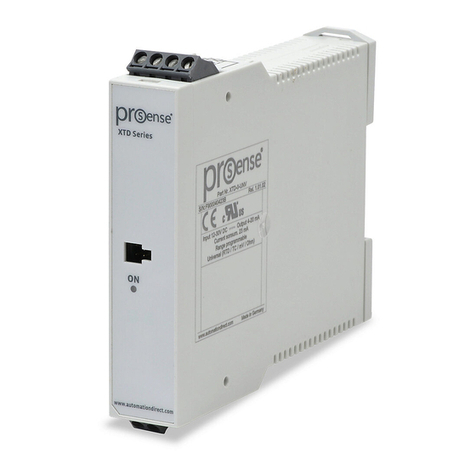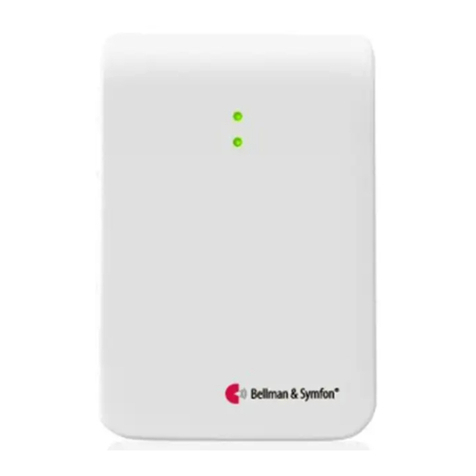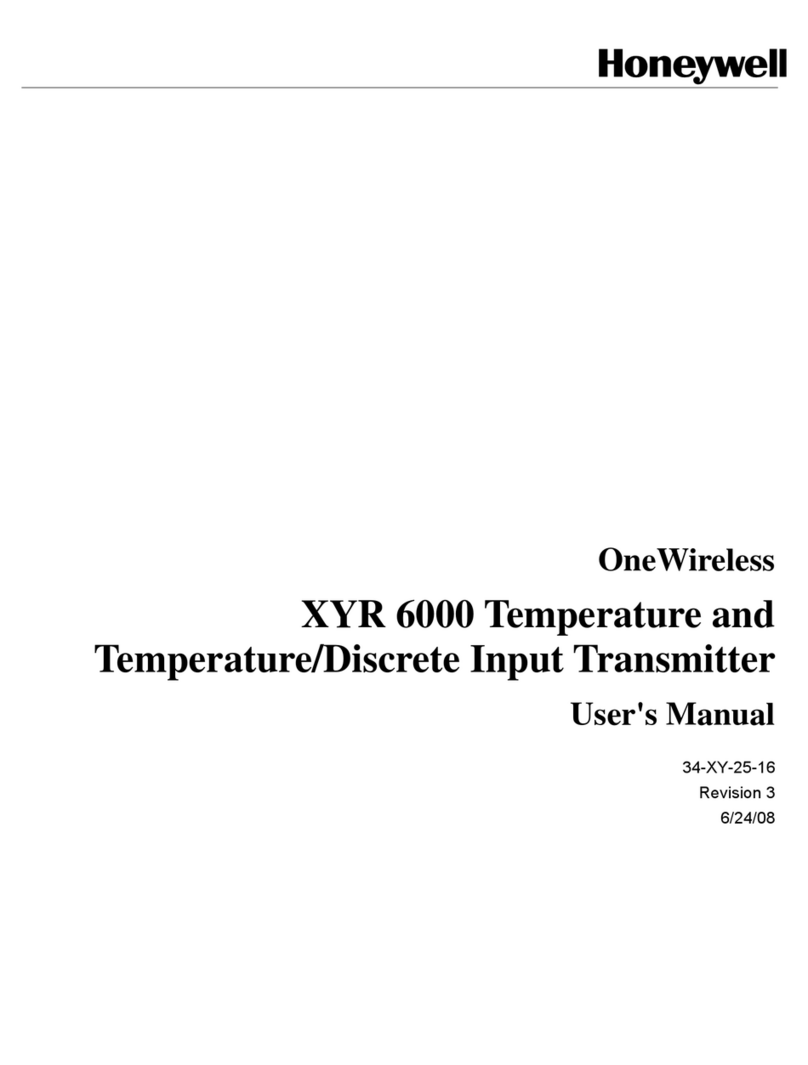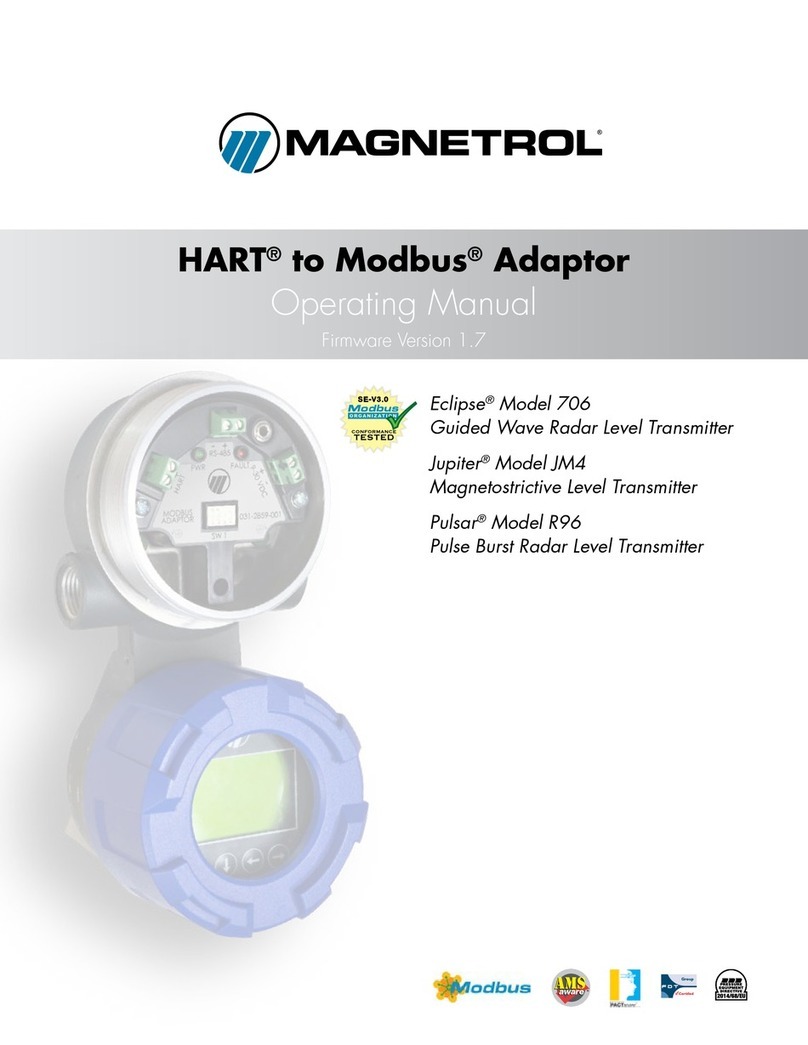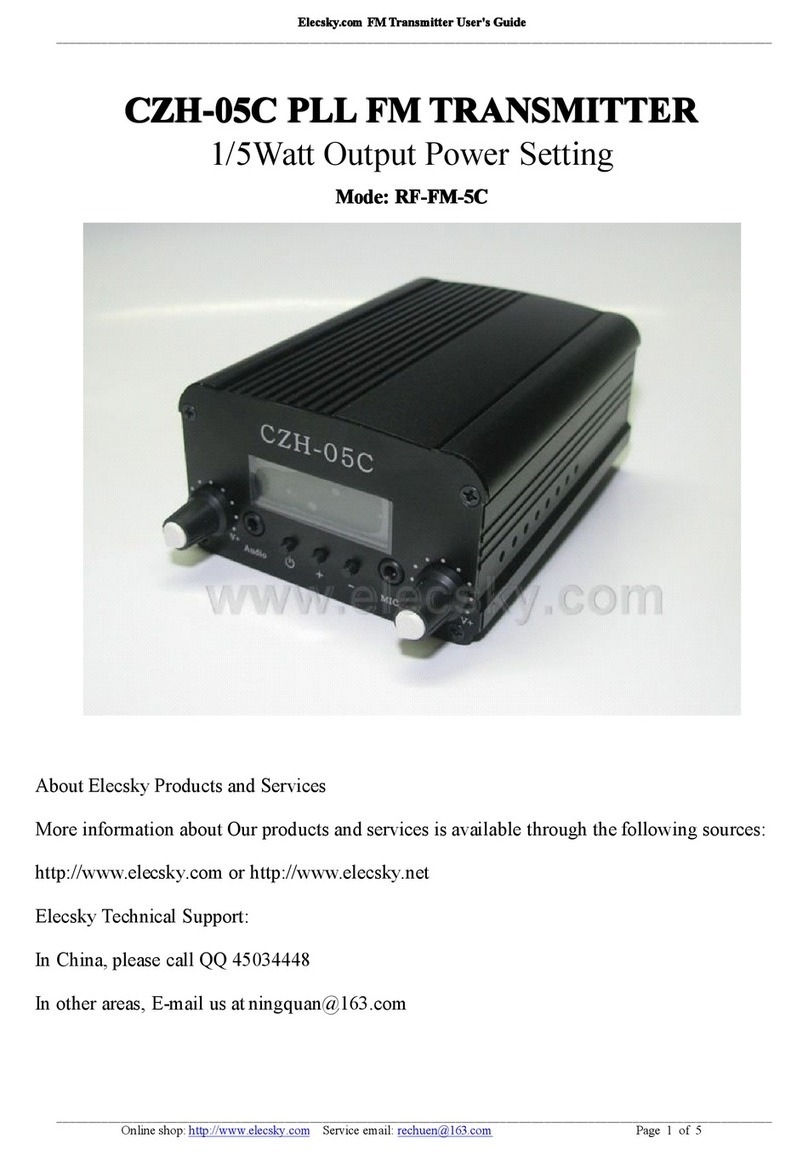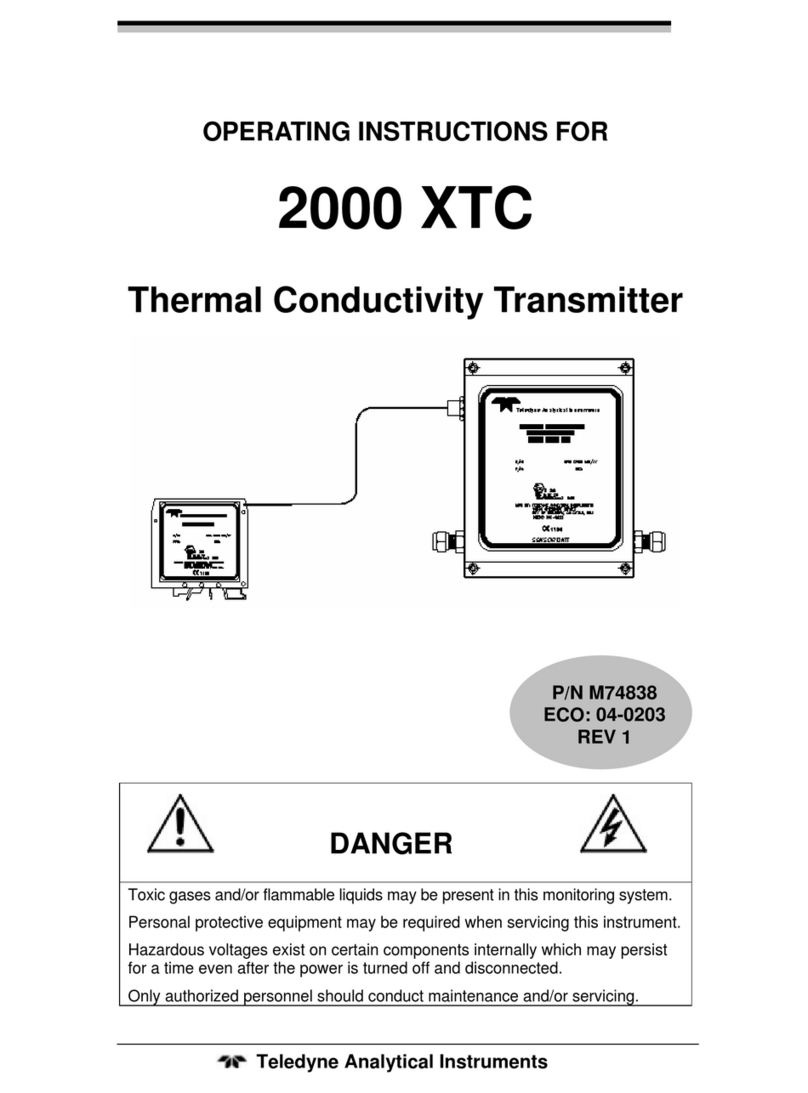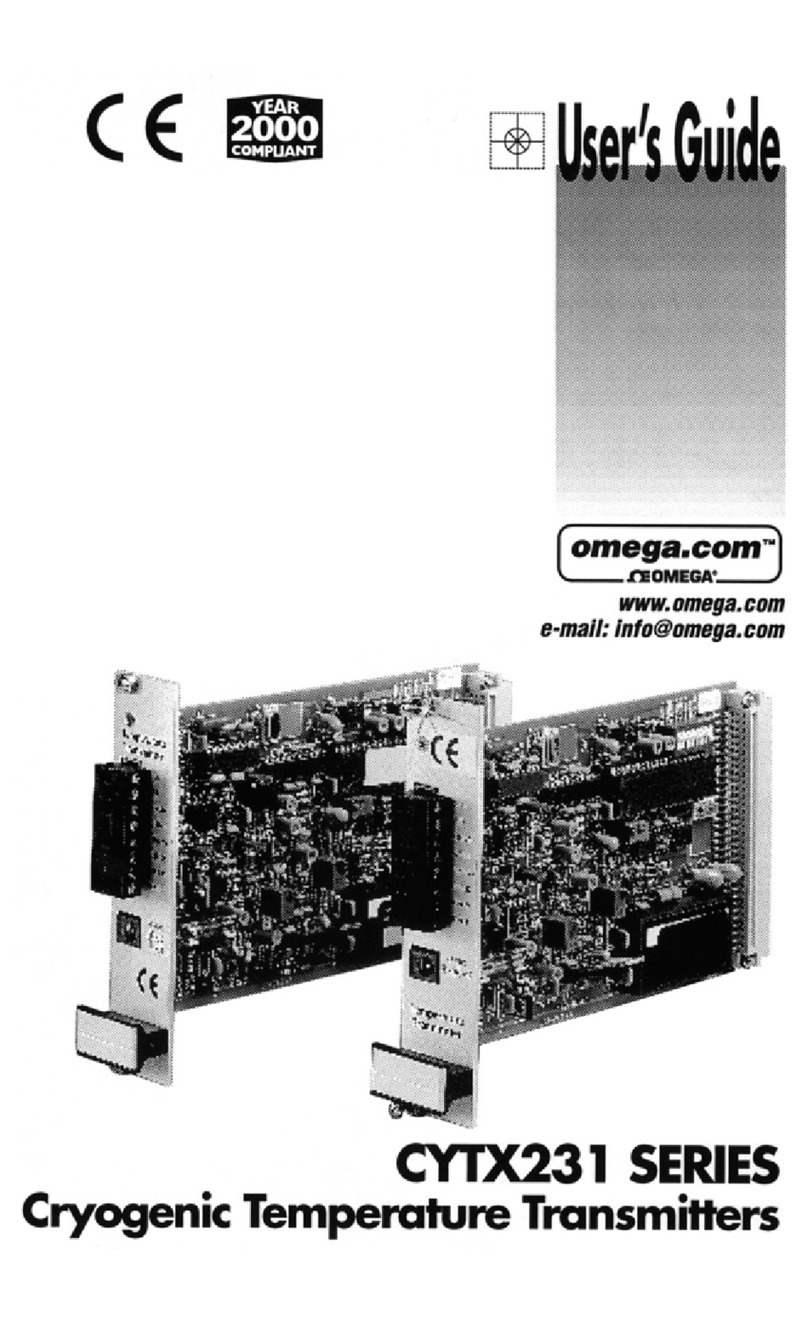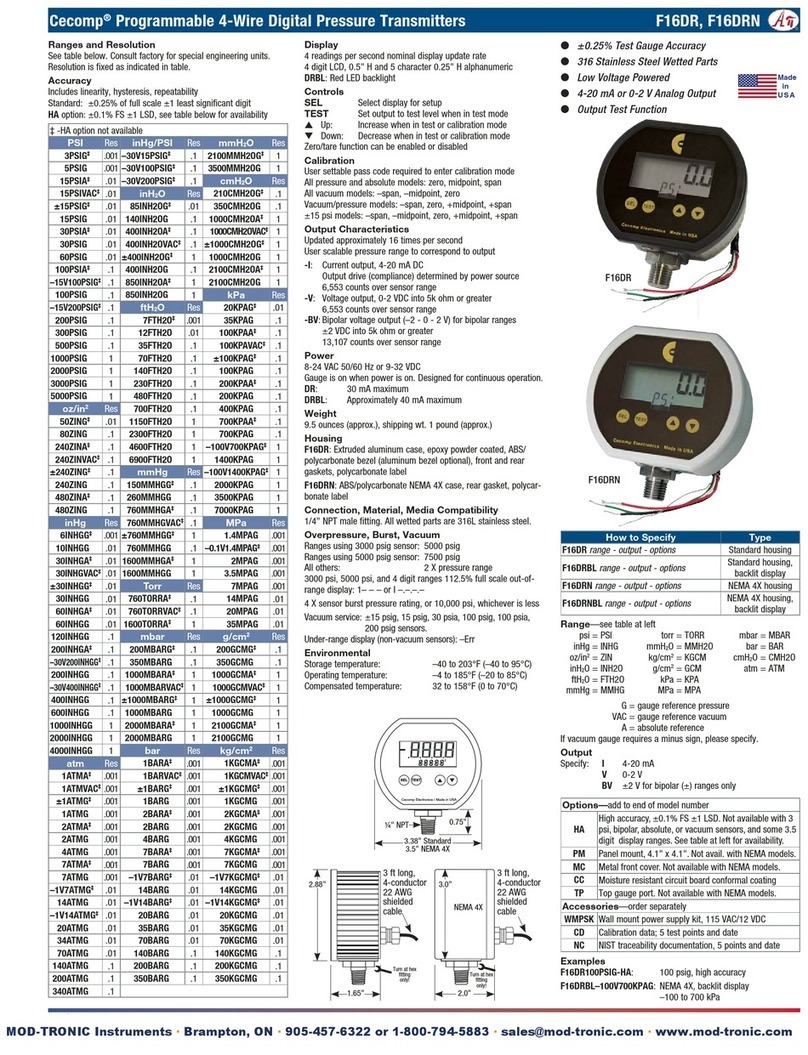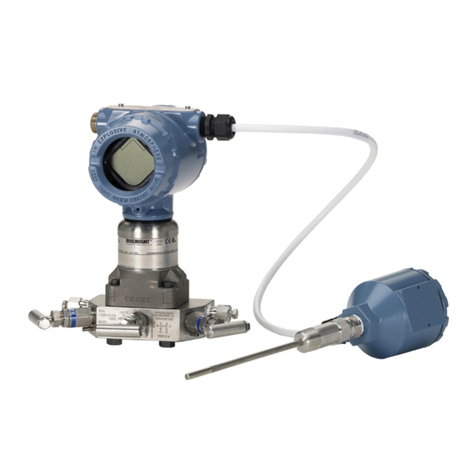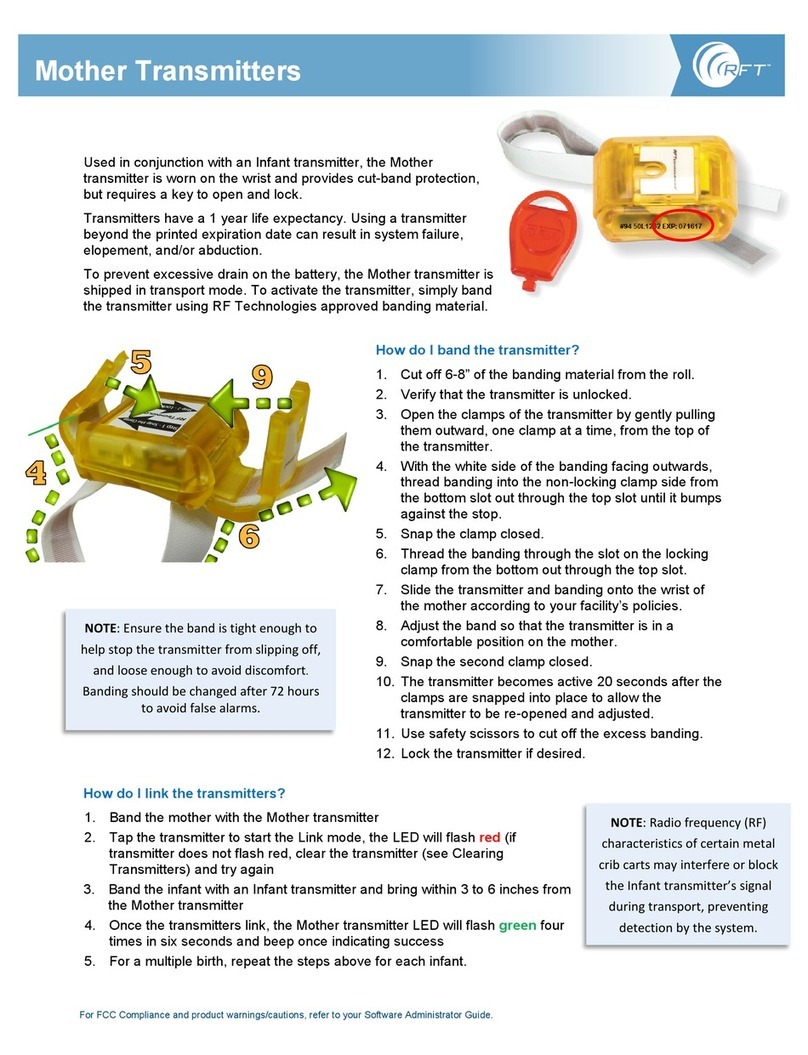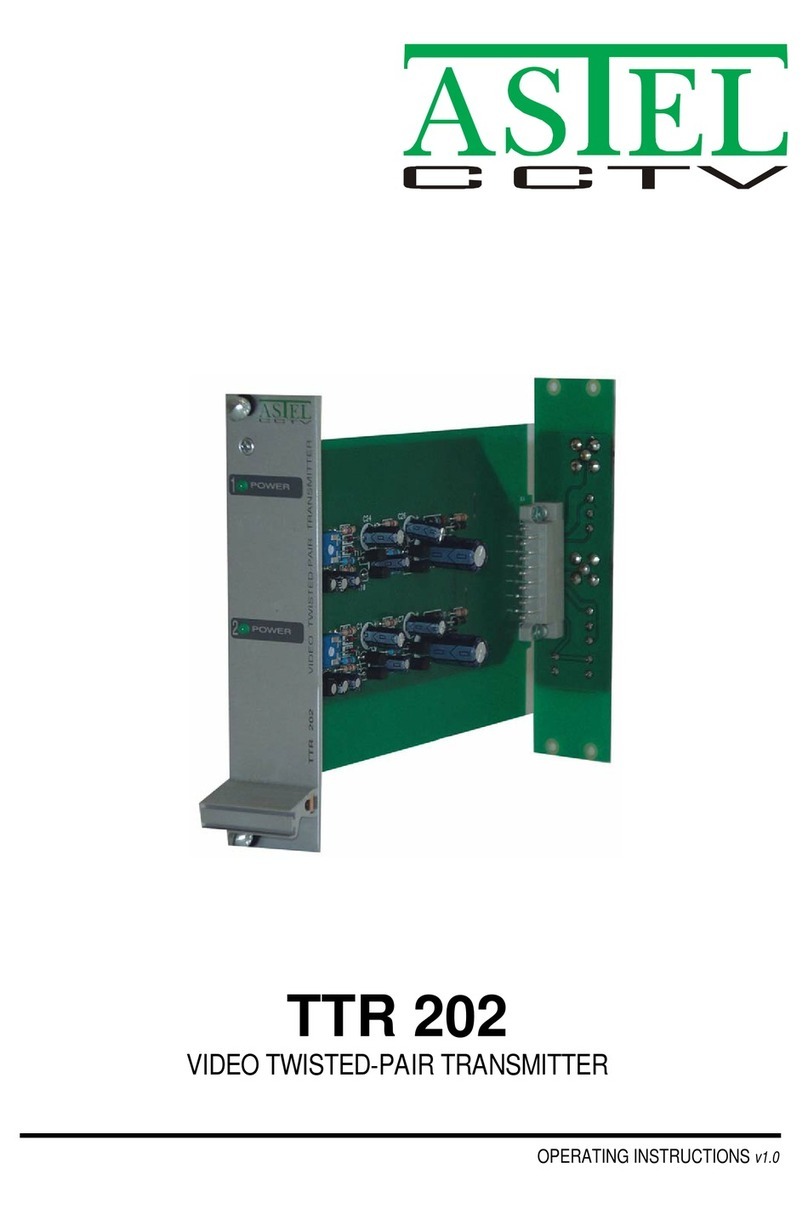Prosense AUTOMATIONDIRECT DPTW Series User manual

InstallatIon and
MaIntenance InstructIons
for dPtW serIes
dIfferentIal Pressure
transMItter

DPTW User Manual, 1st Edition
User Manual - DPTW Differential Pressure Transmitter
2
In this Chapter...
Caution...........................................................................................................................4
1. Preface .......................................................................................................................5
2. Overview....................................................................................................................5
3. Features......................................................................................................................5
4. Specifications.............................................................................................................6
Specifications Cont.......................................................................................................7
5. Mounting ...................................................................................................................8
5.1 General ..................................................................................................................8
5.2 Mounting Orientation ............................................................................................8
5.3 Installing Pressure Port Manifold ............................................................................8
6. Piping.........................................................................................................................9
7. Wiring ......................................................................................................................10
7.1 Cable/Wire Specifications .....................................................................................10
7.2 Wiring Instructions ...............................................................................................10
9. Mode Changes.........................................................................................................14
10. Power-On Message................................................................................................14
11. Measurement Mode ..............................................................................................15
11.1 Filter (Damping).................................................................................................15
11.2 Differential Pressure Display Mode (Re-scaling in “inH20” units)........................15
11.3 Linear Display Mode (Re-scaling in arbitrary user defined units).........................16
11.4 Square Root Display Mode.................................................................................18
11.5 Out of Range Display .........................................................................................23
12. Zero Adjustment Mode .........................................................................................23
13. Key Lock.................................................................................................................24
14. Setting Mode.........................................................................................................24
14.1 Setting Items for Differential Pressure Display Mode ..........................................24
14.2 Setting Items for Linear Display Mode................................................................26
14.3 Setting Items for Square Root Display (Flow Measurement) ...............................27
14.4 Setting Procedure (Setting Examples from 14.1, 14.2).......................................28
14.5 Loop Check........................................................................................................30

DPTW User Manual, 1st Edition
User Manual - DPTW Differential Pressure Transmitter
3
15. Dimension Drawings .............................................................................................31
16. Maintenance and Warranty ..................................................................................32
17. Advanced Water Flow Rate and Volume Application Example............................33

DPTW User Manual, 1st Edition
User Manual - DPTW Differential Pressure Transmitter
4
Caution
Warning! Read Before Installation
General
A failure resulting in injury or damage may be caused by excessive overpressure, excessive
vibration or pressure pulsation, excessive instrument temperature, corrosion of the pressure
containing parts, or other misuse. Contact AutomationDirect.com technical support before
installing if there are any questions or concerns.
Overpressure
Pressure spikes in excess of the rated overpressure capability of the transmitter may cause
irreversible electrical and/or mechanical damage to the pressure measuring and containing
elements.
Water/Fluid hammer and surges can destroy any pressure transmitter and must always be
avoided. A pressure snubber should be installed to eliminate the damaging hammer effects.
Fluid hammer occurs when a liquid flow is suddenly stopped, as with quick closing solenoid
valves. Surges occur when flow is suddenly begun, as when a pump is turned on at full power
or a valve is quickly opened.
Liquid surges are particularly damaging to pressure transmitters if the pipe is originally empty.
To avoid damaging surges, fluid lines should remain full (if possible), pumps should be brought
up to power slowly, and valves opened slowly. To avoid damage from both fluid hammer and
surges, a surge chamber should be installed.
Symptoms of fluid hammer and surge’s damaging effects:
• Pressure transmitter exhibits an output at zero pressure (large zero offset).
• Pressure transmitter output remains constant regardless of pressure
• In severe cases, there will be no output.
Freezing: Prohibit freezing of media in pressure port. Unit should be drained to prevent possible
overpressure damage from frozen media.
Static Electrical Charges
Any electrical device may be susceptible to damage when exposed to static electrical charges. To
avoid damage to the transmitter observe the following:
• Ground the body of the transmitter BEFORE making any electrical connections.
• When disconnecting, remove the ground LAST!

DPTW User Manual, 1st Edition
User Manual - DPTW Differential Pressure Transmitter
5
1. Preface
The personnel for installation, commissioning, diagnostics and maintenance must fulfill the
following requirements:
• Trained, qualified specialists must have a relevant qualification for this specific function
and task
• Are authorized by the plant owner/operator
• Are familiar with federal/national regulations
• Before beginning work, the specialist staff must have read and understood these
instructions
2. Overview
The ProSense DPTW differential pressure transmitter series is precision engineered for accurate
differential or gauge pressure measurement. The wet-wet design uses a silicon based variable
capacitance sensor with stainless steel media isolation diaphragms and silicone pressure
transmission fluid making it compatible with a wide variety of liquids, gases, and steam applied
to both pressure sensing ports. The DPTW series is ideal for industrial, commercial, and OEM
process measurement applications including differential, positive, or negative pressures;
hydrostatic liquid level in pressurized or open tanks; and flow measurement using primary
differential pressure flow elements such as an annular pitot tube, orifice plate or venturi tube.
The DPTW series is available in pressure measurement ranges from 4 inches water column up to
400 inches water column with static (line) proof pressure of 300 psig and can easily be rescaled
to a different linear pressure range and units of measure using display pushbuttons. An integral
square root function also allows for the display and output of flow in instantaneous flow rate units
of measure such as gallons/minute or display of integrated flow volume in units such as gallons.
The integral pressure port manifold has 1/4-inch NPT female process pressure connections and
includes a built-in equalizing valve used to open both ports to the line pressure during installation
to prevent sensor damage or calibration shift due to overpressure. The DPTW series is powered
with nominal 24VDC power and provides a two-wire, 4-20mA output signal proportional to the
measured pressure. The very compact design of the DPTW series is up to 8-times smaller than
conventional style DP transmitters and features a rugged NEMA 4X (IP65) rated aluminum die
cast housing and rotatable 6-digit LCD display with bright LED backlight.
3. Features
• Media Compatibility: Wetted materials consist of 316 stainless steel, alumina ceramic
and viton to handle a wide range of media with the ability to offer ranges as low as 4˝
W.C. F.S. (URL).
• Linear Scaling Function: The linear (scaling) function allows the user to adjust zero
and span values providing a corresponding 4-20mA output signal.
• Flow Measurement/Square Root Extraction Function: Momentary flow rate and
integrated volume can be displayed and analog signal can be output.

DPTW User Manual, 1st Edition
User Manual - DPTW Differential Pressure Transmitter
6
• Digital Filter Function: User adjustable damping of the output signal by means of
internally calculated moving average to provide a stable output signal in applications
where the user wants to reduce the pulsating of the display and / or output signal.
• LED Back Light: To supplement the LCD display when conditions require (dark area,
night etc.).
• Loop Check Function: Allows the user to output an analog signal corresponding to
differential pressure without applying pressure, simplifying system maintenance and
troubleshooting.
• Zero and Span Adjustment: The adjustment of the Zero (4mA) and Span (20mA)
reading via internal push buttons.
• Key Lock Function: Prevents inadvertent overwriting of setting values. Can not be
reset by restoring power when activated.
• IP65 / NEMA 4X Environmental Rating: Enclosure environmental rating suitable
for indoor and outdoor installation, depending upon operating temperature range.*
• CE Compliant
*Display not to be mounted in direct sunlight.
4. Specifications
* Upper Range Limit (URL)
** For steam or other higher temperature processes, ensure that the temperature at the DPTW process connections do not
exceed the Medium Temperature Limits. For steam use longer sensing lines and/or a siphon (pigtail) and fill with water
to lower the medium temperature to acceptable limits.
DPTW Series Specifications
Performance Specifications
Reference Temperature 73°F (23°C)
Accuracy ± 0.50% of span (URL*)
Includes the effects of linearity, hysteresis, and repeatability
Display Accuracy ± 0.5% of span (URL) + 1 digit
Stability ± 0.25% of span (URL)/year
Output Resolution 0.1% of span (URL)
Temperature Effects Temperature Effects: (–10°C to 60°C) ± 0.03% FS/C°
Memory Permanently stored in EEPROM nonvolatile memory
Environmental Specifications
Temperature Limits
Storage: 5°F to 150°F (–15°C to 65°C)
Operating: 14°F to 140°F (–10°C to 60°C)
Medium: 14°F to 140°F (–10°C to 60°C)**
Compensated: 14°F to 140°F (–10°C to 60°C)
Functional Specifications
Rangeablility/Adjustment
Zero –10% to 110% Span
Span –10% to 110% Span
(Accuracy and output resolution based upon full scale (URL) value)
Unit of Measure inH2O (IWC) or User defined
Static (Line) Pressure
Pressure Range: 4 inH2O to 400 inH2O
Proof: 300 psi
Burst: 800 psi

DPTW User Manual, 1st Edition
User Manual - DPTW Differential Pressure Transmitter
7
Specifications Cont.
DPTW Series Specifications
Performance Specifications Continued
Single Side (Differential)
Pressure Range: ≤8 inH2O
Proof: 30 psid
Burst: 130 psid
Pressure Range: ≥20 inH2O
Proof: 100 psid
Burst: 130 psid
Static (Line) Pressure Effects
Pressure Range: Effect:
≥20 inH2O ± 0.3% Range/100 psi (URL)
8 inH2O ± 0.7%Range/100 psi (URL)
4 inH2O ± 1.5% Range/100 psi (URL)
Response Time 100ms (when Filter Function set to 0)
Filter Function 0, 2, 4, 8, or 16 seconds
Vibration 5g’s 150Hz
Shock Effect 10g’s 16ms
Electrical Specifications
Output Signal 4-20 mA (2 Wire)
Load Impedance 545Ω@ 24VDC (refer to Load Limitations graph)
Supply Voltage 12-32 Vdc
Insulation Resistance 50Vdc (>100 MΩ)
EMC Compliance
EMC Directive 2014/30/EU
EN 61326-1:2013
EN 61326-2-3:2013
(EMI Class A/EMS Table 2)
Physical Specifications
Environmental Rating IP65 / NEMA 4X
Mounting Mounting bracket included
Process Connections Manifold with 1/4 NPT Female ports and equalizing valve
Display 6-digit LCD with LED backlight, 10mm character height
Display Update 500ms
Electrical Connection 1/2 NPT Female Preinstalled Cable Gland (Cable diameters 0.35” to 0.47”)
Terminal block: 14-22 AWG stranded or solid wire
Wetted Material
Diaphram 316 SS, Viton® & Alumina Ceramic
Process Connection 316 SS
Media Compatibility Fluids and gases compatible with 316 SS, Viton® and Alumina Ceramic
Non-Wetted Material
Enclosure Aluminum, epoxy coated

DPTW User Manual, 1st Edition
User Manual - DPTW Differential Pressure Transmitter
8
5. Mounting
5.1 General
The DPTW was designed to be mounted using the bracket supplied. Pressure connections
are made via the (2) 1⁄4” NPT female pressure ports. Although the display can be rotated in
90 degree increments by removing the display cover it is preferable to orientate the electrical
termination downward, particularly in applications where protection from the environment is
required.
5.2 Mounting Orientation
It is preferable to orientate the unit with the pressure ports either downward or upward. If
mounting with pressure ports to the side an “orientation effect” will be seen at zero pressure
as the pressure generated by the silicone oil fill will appear as a zero offset. If mounting in this
manner this effect may be taken out by resetting zero (refer to Section 12) in final mounting
orientation.
5.3 Installing Pressure Port Manifold
(1) Mounting 25.4mm Manifold (1⁄4˝ NPT female ports)
Manifold is secured using the (4) socket head bolts (M4x40) and appropriate allen
wrench which is supplied. Check for dust and dirt on the O-ring and seal area, clean if
necessary, before installing to ensure proper connection. The direction of the manifold
is not important, determine best position by ability to operate the equalizing valve.The
equalizing valve is used to open both ports to the line pressure at time of installation.
Once installed and the system has been pressurized the valve needs to be closed to iso-
late the low and high pressure sides of the device.
Tighten the equalizing valve with a torque of 0.75 ft-lbs ±5%. When loosening the
valve do not back off by more than three turns from the closed position.
Bleed port set screws should not be fully removed as sealing components can be
dislodged from housing.
(2) Panel Mounting
Similar to (1) above except that the DPTW is put between the manifold and the panel
mounting bracket then the (4) socket head bolts (M4x40) are installed.
(2) 1/4˝NPTF
1.4 (35)
.55 (14)
.83 (21)
1.8 (45.4)
1.0 (25.4) Hex .83 (21)
.33 (8.5)
Equalizing
valve
• 1.0 in. (25.4mm) mounting manifold

DPTW User Manual, 1st Edition
User Manual - DPTW Differential Pressure Transmitter
9
Low pressure
inlet (L)
Panel mounting
bracket
High pressure
inlet (H)
Equalizing
valve
M4 x 40
O-rings
6. Piping
Note: High (H) and Low (L) pressure sides of the device are marked on the yellow label
affixed to the housing of the unit.
Install the high pressure side of the applied differential pressure in the pressure inlet of the
high pressure side (H) and the low pressure side in the pressure inlet of the low pressure side
(L).
(Refer to the Dimension Drawings Section 15.)
After the piping is completed check for leaks.
Piping of 1.0 in (25.4mm) Manifold (1⁄4˝ NPT female ports)
Use caution when installing to keep metal chips and other debris from entering pressure
transmitter. In addition, when sealing tape is used, do not apply to last two threads at the end
of the fitting

DPTW User Manual, 1st Edition
User Manual - DPTW Differential Pressure Transmitter
10
Note:
• When transporting and / or mounting do not apply excessive shock or use device as a
step.
• The piping should be of proper length so as not to apply load to the connection point
on the transmitter.
• CAUTION! At the time of mounting or when bleeding air from the device be
sure to open the equalizing valve with a flathead screwdriver so that excessive
pressure (more than the allowable maximum differential pressure) is not applied
to the differential pressure sensor. Maximum torque to apply to equalizer valve
is 0.75 ft-lbs ±5%. Bleed port set screws should not be fully removed as sealing
components can be dislodged from housing.
7. Wiring
7.1 Cable/Wire Specifications
Use appropriate cable described below which is suitable for power supply requirements and
ground to housing.
Wiring Terminals
Terminal Strip
Cable
Requirements
SMKDSP1.5/2-5.08 Phoenix Contact
• Two core shielded cable
• Cable outer diameter: 0.35˝to 0.47˝9-12mm
(Required for correct installation with Cable
Gland)
• Wire Gauge: 14-22 AWG (multi-strand or solid)
7.2 Wiring Instructions
• To reduce potential for noise do not run pressure transmitter cable /wires alongside
(same conduit as) high voltage (line power) lines. For optimum results use dedicated
conduit for DPTW cable / wires.
• Must use cable within previously noted diameters to maintain environmental ratings
when using the cable gland.
• When connecting shield / drain wire, only connect one end which should be at the
receiver ground.
• Wiring stripping instructions, remove cable jacket 2-3˝ and strip wires 0.25˝. Shield /
drain wire should not be exposed at the pressure transmitter termination.
• Remove cover and carefully remove the display to access the terminal strip, take care
not to mishandle the display and associated electronics.

DPTW User Manual, 1st Edition
User Manual - DPTW Differential Pressure Transmitter
11
• Turn display over to
expose terminal strip,
make positive and
negative connections,
insert wire depth is
equal to recommended
strip length (0.25˝).
+
-
Terminal box
Display (board)
Shield
Power source
+-
Receiver
Transmission cable
CASE
DISPLAY
COVER
Inside sensor Line
LCD holder
Notch
Transmission cable
(Twist)
Cable Jacket
Display
W
ire terminals
Wire Turn with a screwdriver
LCD clips (4)
Display board
Power supply
terminal block
Cable Gland
12-32 VDC
4-20 mA

DPTW User Manual, 1st Edition
User Manual - DPTW Differential Pressure Transmitter
12
• After completing connections locate retaining clips in the appropriate notches and
carefully place into the housing. Be sure that internal sensor transmission wire does not
cross the power supply lines just installed.
• If using the Cable Gland be sure to properly tighten sealing grommet before applying
any tension on the cable, the cable gland provides strain relief and environmental sealing.
• Tighten DPTW cover to maintain environmental rating.
• Connect to power source and receiver and power on to confirm correct wiring (see
Section 10 for more detail).
• Power Supply Requirements: Although the 4-20mA signal can travel over long distances
one of the most common problems is inadequate power at the pressure transmitter due
to the voltage drop across the loop. Be sure to review table below to determine that
12-32V is getting to the pressure transmitter.
Vmin= 12V+ [.022A*(RL)]
(Includes a 10% safety factor)
RL =R
S + RW
RL =Loop Resistance (ohms)
RS =Sense Resistance (ohms)
RW=Wire Resistance (ohms)
Load Limitations 4–20mA Output
1,000
750
500
250
0
3
02
2010
909
3012 24
545
LOOP SUPPLY VOLTAGE
OPERATING
REGION
0
Loop Resistance ( )

DPTW User Manual, 1st Edition
User Manual - DPTW Differential Pressure Transmitter
13
CH+ CH–
inH
2
O
M
Differential pressure
unit monitor
Test Terminals
MODE key
DOWN key
UP key
Scaling - Arbitrary
unit monitor
No function
Measured data
display
Total flow volume
display (X100)
Total flow volume
display (X1000)
Linear scaling mode
Total flow volume
display (X10)
Total flow volume
display (X1)
DPTW
DESIGNATION FUNCTION
Measured data
display
Differential
pressure unit
monitor
Scaling;
arbitrary unit
monitor
MODE key
(M)
DOWN key
,
UP key
.
Differential pressure, linear scaling
value are displayed.
When this unit monitor is ON, the
differential pressure (inH2O)is indi-
cated on the measured data display.
When this unit monitor is ON, the
scaling value of an arbitrary unit
(linear scaling), is indicated on the
measured data display.
This key is used to switch the setting
mode and the measurement mode
and to change the setting item.
This key is used to change (de-
crease)and select the set value .
This key is used to change (in-
crease) and select the set value
and to shift from the measure-
ment mode to the zero adjust-
ment mode.
DESIGNATION FUNCTION
Linear
scaling
mode
No None
function
Used to ad-
just zero/
span values
to 4-20mA
output signal.
to
Total flow
volume
display
Display
multiplier,
X1, X10,
X100, X1000

DPTW User Manual, 1st Edition
User Manual - DPTW Differential Pressure Transmitter
14
9. Mode Changes
• Measurement Mode (Section 11 for further detail) will be entered upon power-on.
Setting Mode (Section 14 for further detail) is entered by pressing and holding the
MODE button for more than 3 seconds. If there is no button operation for 10 minutes
in the setting mode, it will shift back to the Measurement Mode automatically.
• To go from the Measurement Mode to the Zero Adjustment Mode (Section 12 for
further detail) press and hold the UP .button for more than 3 seconds.
Power ON
Power on message
Measurement mode
Setting mode Zero adjustment
(M) key for
more than
3 seconds
() key for
more than
3 seconds
(M) key for more
than 3 seconds
or if there is no
operation for
10 minutes
Finish
10. Power-On Message
After the power is turned on, the power-on message is displayed for 6 seconds as shown below
and then the display is shifted to the measurement mode (Section 11). In addition, the analog
output during power-on message is at the zero point (4mA).
......
.
All lights
two seconds
Differential
pressure range
two seconds

DPTW User Manual, 1st Edition
User Manual - DPTW Differential Pressure Transmitter
15
11. Measurement Mode
The measurement mode includes differential pressure display mode, linear display mode, and
square root display mode (flow measurement). For the Setting items 1to 27, please refer to
the Setting Mode (Section14).
11.1 Filter (Damping)
Set the filter before setting pressure display mode or linear (scaling) display mode.
The filter is based on the moving average of the pressure data to decrease display “bounce” and
to smooth the analog output due to system pressure fluctuations at the user’s discretion.
Five selections: (0, 2, 4, 8, and 16 seconds).
If “0” is selected the filter is not applied.
See Section 14.4 for full menu.
Filter Setting ==> item
11.2 Differential Pressure Display Mode (Re-scaling in “inH20” units)
This mode is used for display and analog output of the actual differential pressure.
(1) Analog output
The analog output can be adjusted as follows; the zero point (4mA) and the span point
(20mA) can each be adjusted from –10 to 110%F.S. (URL)*.
(2) Pressure display
The pressure display has a display span between the zero point and the span point
as determined by the adjustment of zero and span (see previous paragraph) and can
display the range of –5 to 105%F.S.(URL). In addition, the decimal point position of
the pressure display is fixed for each pressure range.
Pressure Unit: inH2O
See Section 14.4 for full menu.
Output zero point and span point setting ==> Setting item ,
* This means that although the zero point is typically set at 0%F.S. and the span point is set
as 100%F.S., the zero point can be adjusted to the point where zero (4mA) is 110%F.S. and
the span point (20mA) can be adjusted to -10%F.S thus reversing the output. In addition,
through this adjustment zero and span can be adjusted accordingly for elevated tank levels.

DPTW User Manual, 1st Edition
User Manual - DPTW Differential Pressure Transmitter
16
Setting example 1 : Differential pressure display mode
The setting to use the differential pressure range 0 to 20 inH2O (“W.C.) and to display the
zero point and span point of the analog output as –2 inH2O and 18 inH2O respectively is as
follows:
In the example the filter (moving average time) is set at 2 seconds, the differential pressure
display and the analog output are based on the moving average equivalent to the differential
pressure data per 100ms for the past 2 seconds (20 times).
See Section 14.4 for full menu.
D isplay and analog o utput
Ex. Differential pressure of 8 inH2O
• Differential pressure display:
• Analog output: 12(mA)
.
Differential
Pressure Analog
Display Output
(inH2O) (mA)
Output span point 18.00 ==> 20
8.00 ==> 12
Output zero points –2.000==> 4
Select the filter of “2 seconds” ==> Setting item
Select the “Differential pressure display mode - [non]” ==> Setting item
Set output zero point as “–10.0%F.S.” ==> Setting item
Set output span point as “90.0%F.S.” ==> Setting item
11.3 Linear Display Mode (Re-scaling in arbitrary user defined units)
This mode is used for display / analog output of the scaling value where the differential
pressure is linearly converted to an arbitrary user defined physical quantity.
(1) Linear display
By setting the OFFSET to the minimum differential pressure P1 and the FULL SCALE
to the maximum differential pressure P2, the linear display indicates the value on the
line between the two points (the maximum display span). The actual linear display span
depends on the setting of the zero point and span point of the analog output as shown in
(2) Analog output. It can display the range of –5 to 105%F.S. of the linear display span.
• The setting range for the minimum differential pressure P1 and the maximum
differential pressure P2 is 0 to 100%F.S. of the differential pressure range, and the
maximum differential pressure P2 is set from the value which is more than 25%F.S. of
the differential pressure range above the minimum differential pressure P1.
• The setting range for the OFFSET and FULL SCALE values is –1999 to 1999, and
the decimal point can be set arbitrarily. At this time, the arbitrary unit monitor LED
turns on.

DPTW User Manual, 1st Edition
User Manual - DPTW Differential Pressure Transmitter
17
Display
Display
Full Scale
F
ull Scale
(20mA)
(4mA)
Offset
(4mA)
Offset
(20mA)
Differential
Pressure
Differentia
l
Pressure
P1
(Min.) P2
(Max.)
P1
(Min.) P2
(Max.)
See Section 14.4 for full menu.
Min. differential pressure P1and
max. differential pressure P2setting ==> Setting item ,
OFFSET & FULL SCALE setting ==> Setting item , ,
(2) Analog output
The zero point (4mA) and span point (20mA) of analog output can be set in the range of
–10 to 110%F.S. of the maximum display span (between OFFSET and FULL SCALE).
The span between the zero point and the span point in this analog output is the linear
display span.
Analog output zero point
and span point setting Setting item ,
As shown in the previous diagram, usually, the OFFSET is set as Output zero point (4mA)
and the FULL SCALE is set as Output span point (20mA), but the OFFSET can be reversed
to Output span point (20mA) and the FULL SCALE can be reversed to Output zero point
(4mA).
Setting example 2 : Linear display mode
A DPTW with a differential pressure range of 0 to 200 inH2O used as a level transmitter,
the linear display setting to display the OFFSET for minimum 20 inH2O as 0.0, the FULL
SCALE for maximum differential pressure 120 inH2O as 50.0, the unit as arbitrary unit (cm),
the zero point (4mA) analog output as 0.0, and the span point (20mA) as 50.0 is as follows:
See Section 14.4 for full menu.

DPTW User Manual, 1st Edition
User Manual - DPTW Differential Pressure Transmitter
18
For display mode, select “Linear display mode - [Lin]” ==>Setting item
Set min. differential pressure P1 as “20 inH2O”==>Setting item
Set max. differential pressure P2 as “120 inH2O”==> Setting item
Set decimal point position of linear display
as “one digit” ==> Setting item
Set OFFSET of linear display as “0.0cm” ==> Setting item
Set FULL SCALE of linear display as “50.0cm” ==>Setting item
Set output zero point as “0.0%F.S.”
(0.0m) of max. display span* ==> Setting item
Set output span point as “100.0%F.S.”
(50.0m) of max. display span* ==> Setting item
*Maximum display span: OFFSET to FULL SCALE
Select the filter of “0 seconds” ==> Setting item
Linear display and analog output
Ex. Differential pressure 70 inH2O
• Linear display: 25.0(cm)
• Analog output: 12(mA)
.
Differential Linear Analog
Pressure Display Output
(inH2O) (cm) (mA)
120 ==> 50.0 ==> 20 Span Point
==> ==>
20 ==> 0.0 ==> 4 Zero Point
70 25.0 12
11.4 Square Root Display Mode
Flow Measurement
Combining sensing elements such as an orifice plate or pitot tube with the DPTW, the square
root display mode is used for the display of the momentary flow rate, integrated volume and
for analog output corresponding to the momentary flow rate.
(1) Momentary flow rate
Maximum display span from zero to the maximum momentary flow rate. The momentary
flow rate display span depends on the setting of the zero point and span point of the analog
output as shown in (2) Analog Output. It can display 0 to 105% F.S. of the momentary
flow rate display span. The scaling method can be performed only by setting the maximum
momentary flow rate and then generate differential pressure using the following square root
formula.

DPTW User Manual, 1st Edition
User Manual - DPTW Differential Pressure Transmitter
19
Momentary flow rate Dx is expressed by the square root formula (a), and can be calculated
only by measuring the generated differential pressure Px (percent value over the differential
pressure range).
Dx= k Px(%)
100(%)
(a)
In addition, the coefficient k is determined by substituting the maximum momentary flow
rate Dm, which is measured from the formula (a), and the corresponding differential pressure
Pm into the formula (b).
k = Dm00
Pm
100
(b)
• The differential pressure Pm generated during the maximum momentary flow rate
can be set in the range of 25 to 100%F.S. of the differential pressure range.
• The setting range for values of the maximum momentary flow rate is 0 to 1999.
Note: The decimal point can be set arbitrarily.
Setting of max. momentary flow rate and then
generated differential pressure ==> Setting item , ,
• When the display resolution lowers and the wobbling of momentary flow rate increases
in the low flow domain of the differential pressure flow meter, the domain (below the
set value) will be forcedly indicated as zero by means of the low-cut for momentary
flow rate.
Moreover, the analog output has a fixed value of 4mA at the zero point. For setting of low-
cut, input the percent value over the maximum display span. Its range is 0 to 30%F.S. and the
decimal point position can be set up to one digit after decimal point as fixed point.
Setting of low-cut ==>Setting item
(2) Analog output
The zero point (4mA) and span point (20mA) of analog output can be set in the range of 0
to 110%F.S. of the maximum display span (0 to maximum momentary flow rate). The span
between the zero point and the span point in this analog output is the momentary flow rate
display span.

DPTW User Manual, 1st Edition
User Manual - DPTW Differential Pressure Transmitter
20
(3) Integrated volume
• The units of integrated volume include two standards: Time factor and flow rate
volume factor.
Setting of integrated volume unit ==> Setting item 20 , 21
• The number of digits of integrated volume display is a maximum of 6 figures
(999999); the display will return to 0 once the maximum reading has been met.
overflows
• The zero reset of an integrated volume is executed by pressing S key for more than 3
seconds and displaying “cLr” (clear) for 2 seconds.
• As backup in case of POWER OFF, the integrated volume value is stored in the
nonvolatile memory for every hour. After power returns, integration starts from the
integrated volume value stored in the memory.
• Integration is halted during the “FFF” display at the time of differential pressure range
OVER (Refer to paragraph 11.5 (1) )
• The indicated value which is blinking is integrated during the
“blink” display at the time of momentary flow rate display span OVER (Refer to
paragraph 11.5 (2) ).
(4) Display switching method of momentary flow rate and integrated volume
Display switching methods of momentary flow rate and integrated volume include the
automatic switching display method to display them by turns at intervals of fixed time (1 to
10 seconds) and the manual switching display method to change the display by pressing (M)
key.
Selection of display switching method
(automatic or manual) ==> Setting item 22
Setting of display switching time
for automatic ==> Setting item 23
Table of contents
Other Prosense Transmitter manuals
Popular Transmitter manuals by other brands
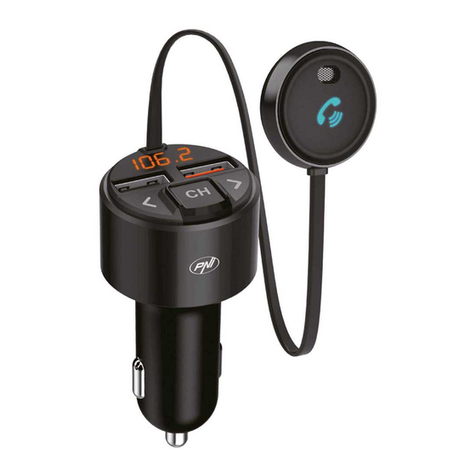
PNI
PNI VALENTINE V880 user manual
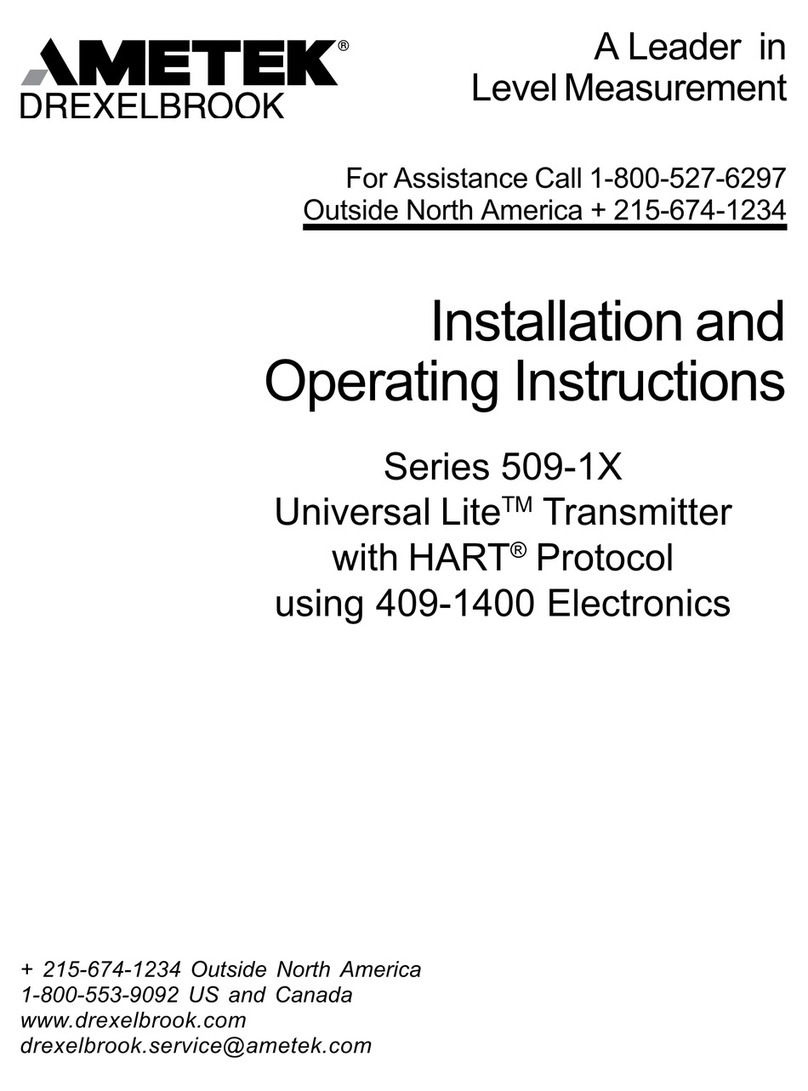
Ametek Drexelbrook
Ametek Drexelbrook Universal Lite 509-1 Series Installation and operating instructions
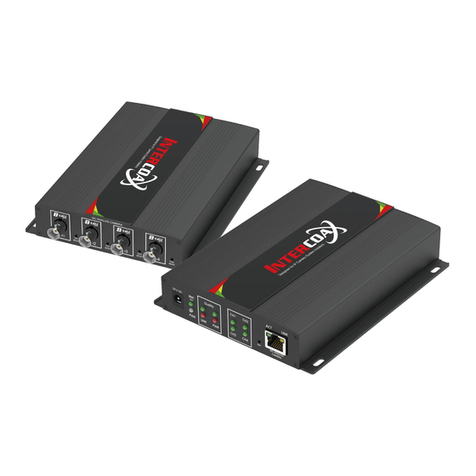
Intercoax
Intercoax Ipify ECP-2704R-4T-PKG Quick install guide
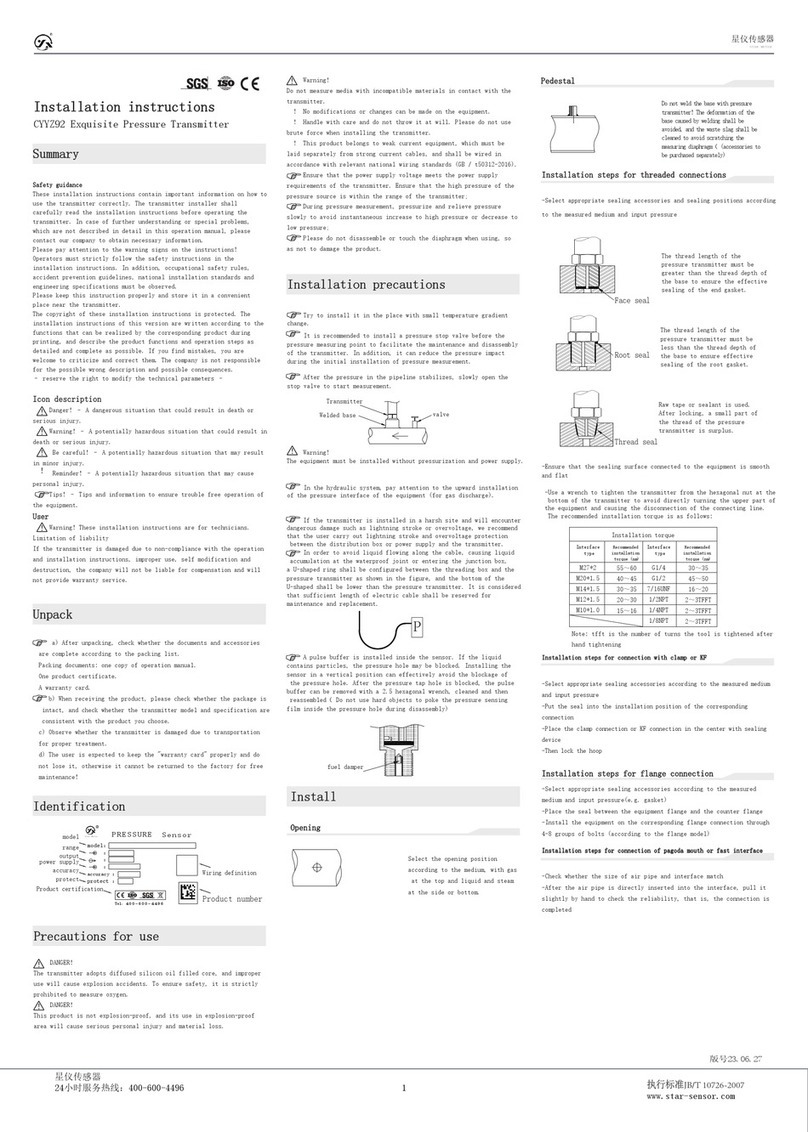
Star Meter
Star Meter KPE 9039G installation instructions
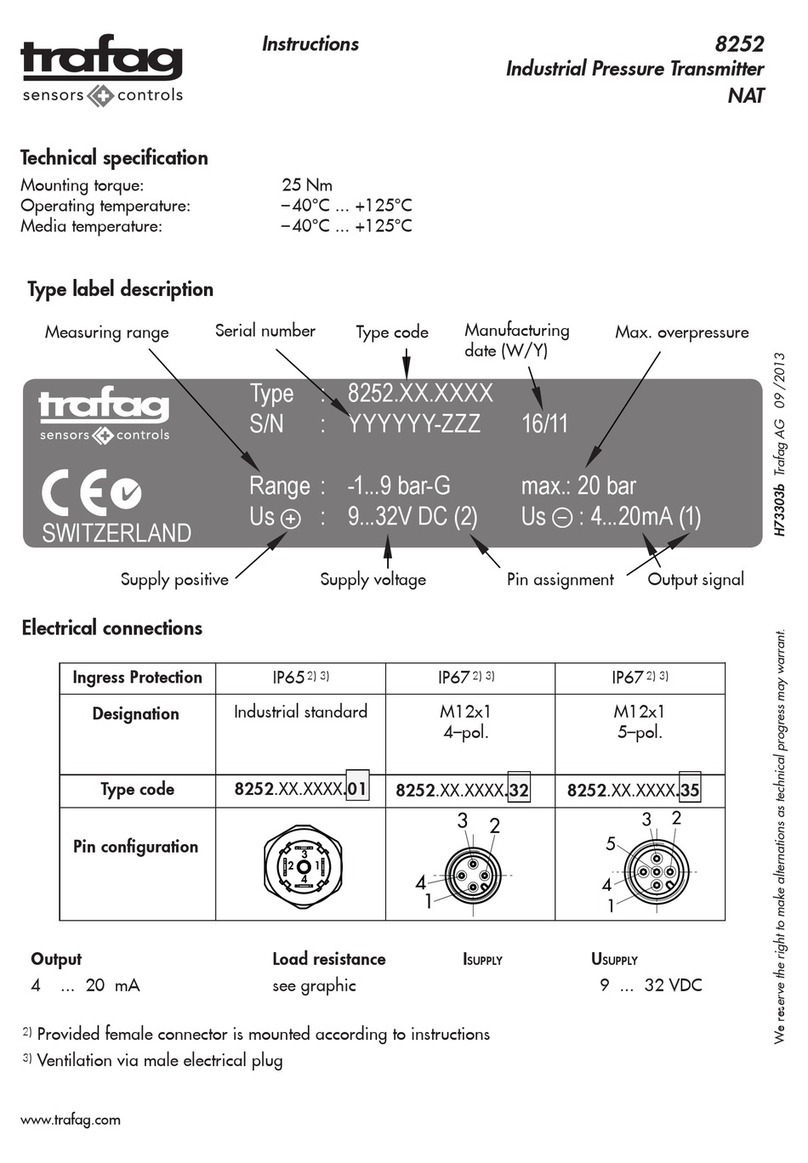
trafag
trafag 8252 instructions
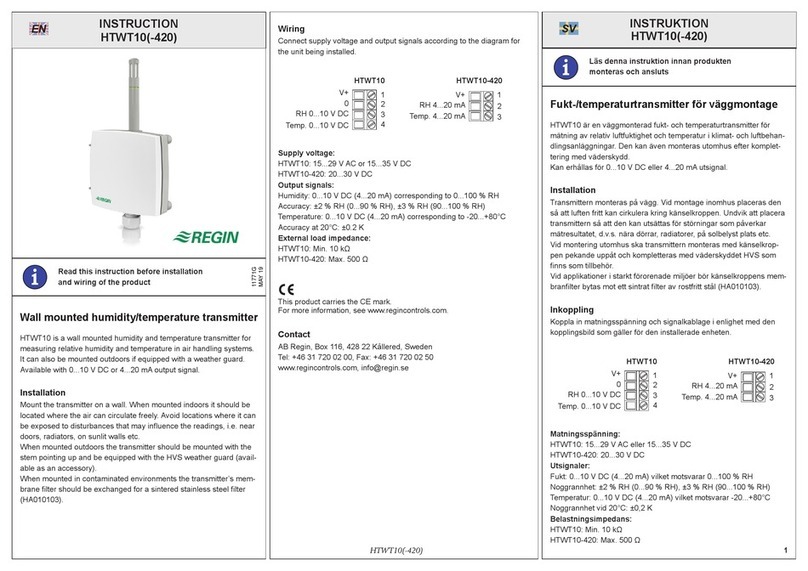
Regin
Regin HTWT10 instructions
